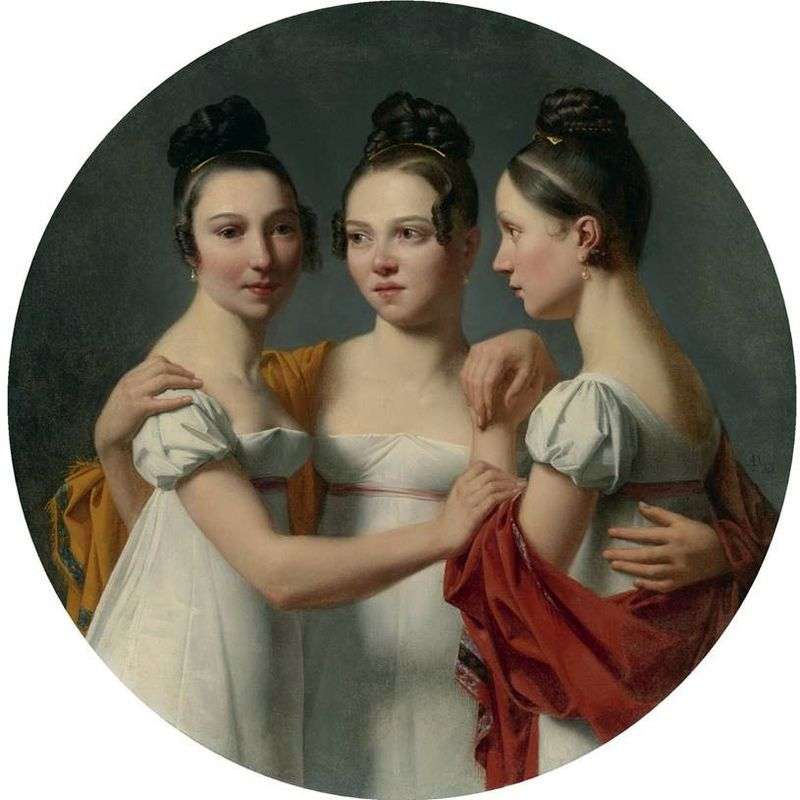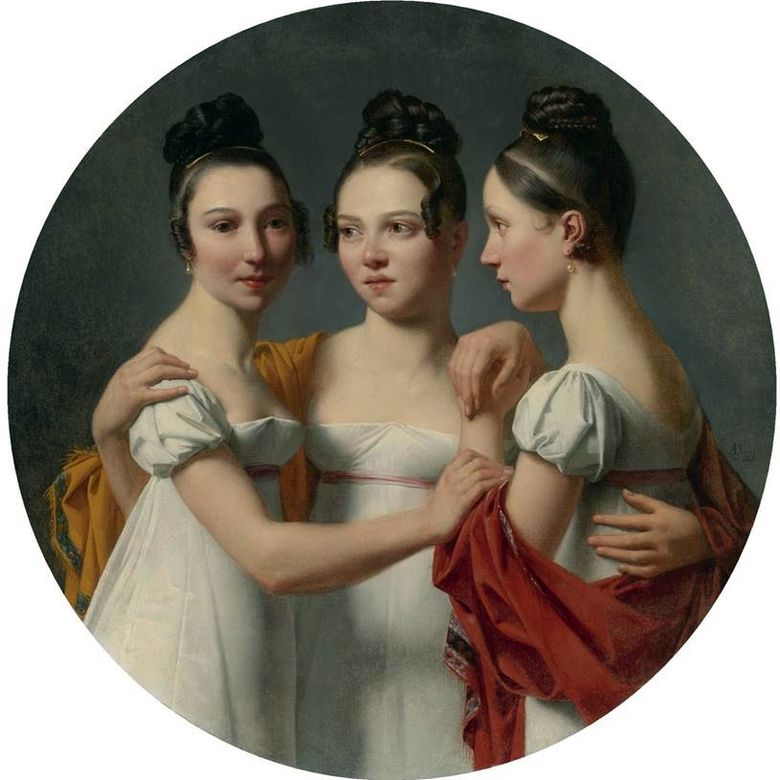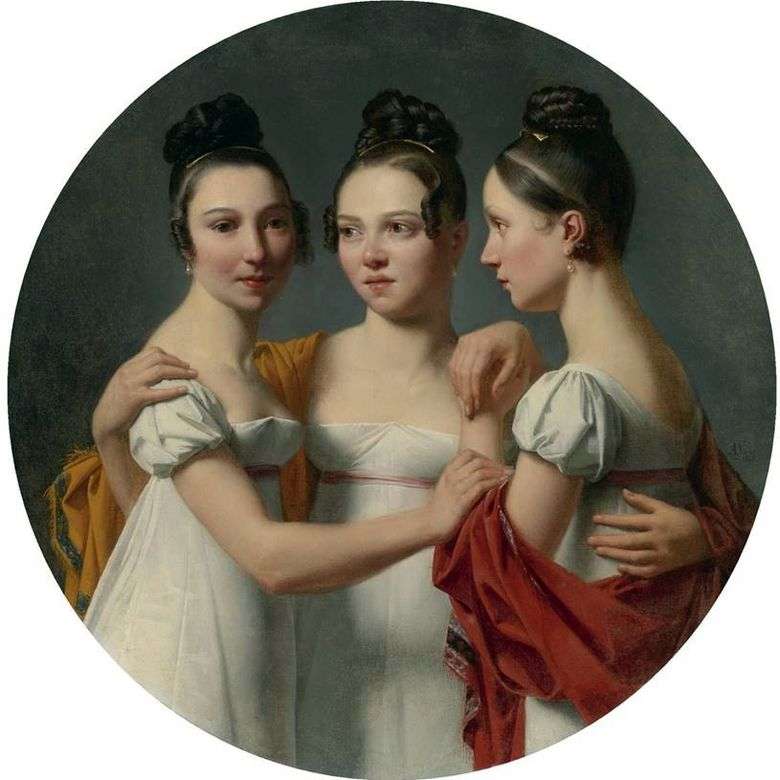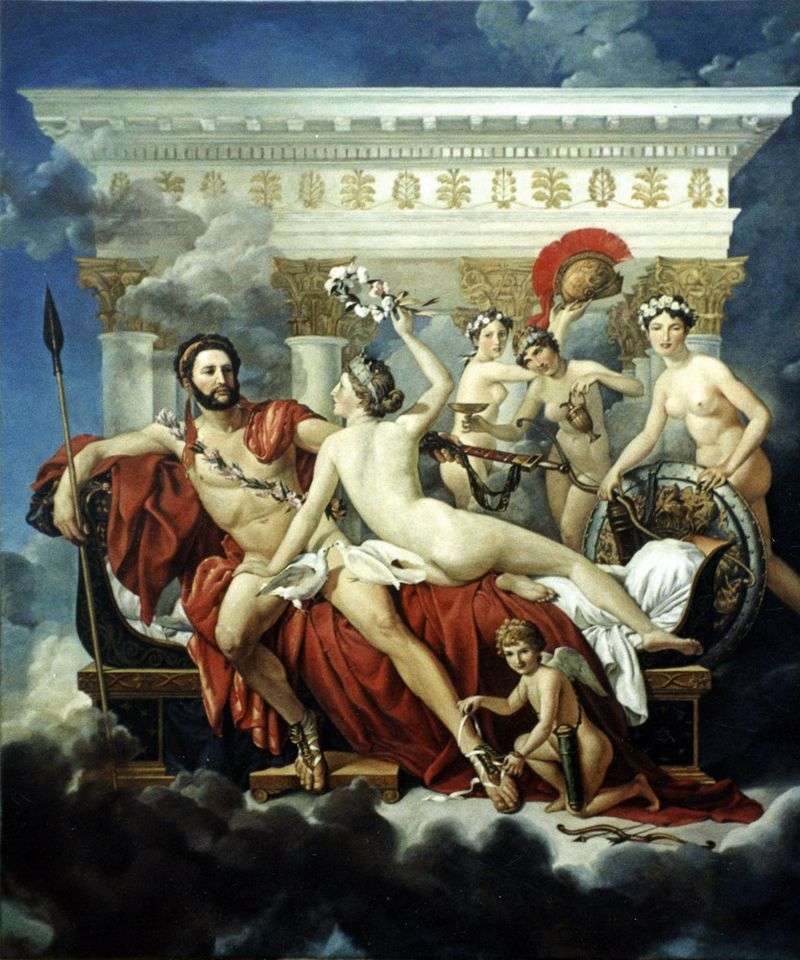
Alexander-Jean Dubois-Drahone is a French portrait painter. He painted canvases in the direction typical for the Rococo era – bright, with the idea of eternal youth and beauty, the desire to escape from the miserable reality. The heroes of Dubois-Drahon have always been sleek, beautiful and “fresh.”
“Three Graces” – a group portrait of girls, written in the early XIX century. This is a pure rococo without any admixture of classicism with its rationalism and nature. Apparently, therefore, the three graces of Drahon are so elegant and translucent and resemble unearthly creatures. The work deserves admiration. This is a light canvas with a fine drawing of individual details, fabric, draperies. The girls are gentle and weightless. The artist’s letter is very smooth. Separate smears are not visible, feathering is almost a mirror.
The palette of works is sweet and honey. You can see how well the light is exposed. It is warm and not sharp. The skin of the graces seems velvety. The abundance of “bunnies” on the faces of girls gives them liveliness and the right amount. From the point of view of historical significance, work deserves attention to the costumes and peculiarities of the hair styling of girls.
Undoubtedly, this is the Empire style, which absorbed the fashion industry in the beginning of the IXI century. Here, the airless olive-colored background is very good. He does not stand out, but at the same time favorably emphasizes the whiteness of the dresses. In addition, it gives warmth to work. The form of the portrait has a round shape, which was rarely used by the authors, but it was advantageous to cut off the empty corners of the layout.
The portrait of Drahony’s work is recognized by whitewashed colors and meticulousness to the smallest detail. The idea of the work is very simple and does not raise questions. Such a canvas will get along well in any interior thanks to unobtrusive colors and plot.
 Trois grâces – Alexander-Jean Dubois-Drahone
Trois grâces – Alexander-Jean Dubois-Drahone Tres gracias – Alexander-Jean Dubois-Drahon
Tres gracias – Alexander-Jean Dubois-Drahon Self-portrait by Jean Honore Fragonard
Self-portrait by Jean Honore Fragonard Date by Jean Honore Fragonard
Date by Jean Honore Fragonard Portrait of a singer holding a music sheet by Jean Honore Fragonard
Portrait of a singer holding a music sheet by Jean Honore Fragonard Young reader by Jean Honore Fragonard
Young reader by Jean Honore Fragonard Pierre II, Duke of Bourbon with St. patron of the apostle Peter by Jean Hay
Pierre II, Duke of Bourbon with St. patron of the apostle Peter by Jean Hay Mars disarmed by Venus and three graces by Jacques-Louis David
Mars disarmed by Venus and three graces by Jacques-Louis David